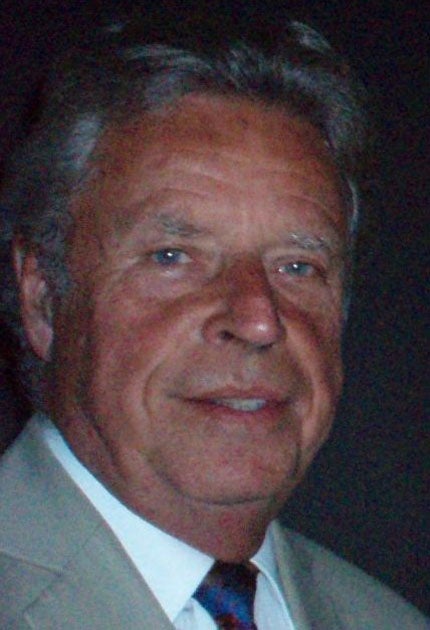Professor Keith Boddy: Pioneer in the field of medical physics

Your support helps us to tell the story
From reproductive rights to climate change to Big Tech, The Independent is on the ground when the story is developing. Whether it's investigating the financials of Elon Musk's pro-Trump PAC or producing our latest documentary, 'The A Word', which shines a light on the American women fighting for reproductive rights, we know how important it is to parse out the facts from the messaging.
At such a critical moment in US history, we need reporters on the ground. Your donation allows us to keep sending journalists to speak to both sides of the story.
The Independent is trusted by Americans across the entire political spectrum. And unlike many other quality news outlets, we choose not to lock Americans out of our reporting and analysis with paywalls. We believe quality journalism should be available to everyone, paid for by those who can afford it.
Your support makes all the difference.Keith Boddy was a medical physicist who built up the largest medical physics organisation in England. His career started in radiation safety, but in 1978 he returned to his native North-east to become Professor of Medical Physics at Newcastle University and head of the regional medical physics department.
His mandate was to develop medical physics (an essential part in treatment of cancer, heart disease and a range of other illnesses) across the whole region. He made ambitious plans, transforming a department on just two hospital sites in Newcastle into a truly regional, comprehensive medical physics service, extending into almost every branch of medicine. Growth continued throughout the 20 years of his term, resulting in a 10-fold increase in size, and clinical services at 13 different hospitals, from the Scottish border to Teesside and Cumbria, with services such as radiotherapy and nuclear medicine being delivered at national standards.
Achieving all this was a substantial feat, particularly maintaining the flow of funding as the NHS went through continual reorganisations, with the very existence of his department being questioned. But he was a tough negotiator, and an expert networker and lobbyist, as well as a compelling speaker. His common-sense approach, humour and homely analogies meant that he generally won his arguments.
He became president of the Hospital Physicists' Association in 1986, when there was concern about the profession's future, arising from medical-radiation over-exposure incidents elsewhere, and low salaries leading to difficulties in recruiting new graduates. He set about raising the profile of medical physics with the government, meeting senior figures and ministers, bringing them to his department, emphasising that his staff were working on the clinical front line and were not just backroom staff. He generated a sense of momentum, and within a few years there was a new NHS grading scheme for clinical scientists, providing for career progression, and a new graduate-training scheme.
In 1994, as President of the International Organisation for Medical Physics, he pursued designation of Medical Physics as a profession recognised by the International Labour Organisation. As president of the International Union for Physical and Engineering Sciences in Medicine, he secured its full membership of the International Council of Scientific Unions.
Boddy was born in Stockton-on-Tees, the son of a bus driver. He graduated in chemistry from Liverpool University and, while radiation-protection officer at the AEI Laboratories at Aldermaston, gained an MSc in radiation physics at London University. At the Scottish Universities' reactor centre, East Kilbride, from 1963, he designed and built whole-body radioactivity monitors for radiation protection, but used also for medical studies, and gained a PhD from Glasgow and DSc from Strathclyde.
His interest in environmental radioactivity dated from 1961 when he reported radioactivity in rainfall from atmospheric Soviet nuclear-weapons tests. After the 1986 Chernobyl nuclear-reactor fire released radioactivity over Europe, he obtained government funding to build a mobile whole-body monitor that toured England and Wales to test people for exposure to it.
He chaired an environmental health committee at Sellafield, and was on committees that studied the incidence of cancer around Sellafield and Greenham Common. He continued after formal retirement, recently investigating radioactive particles found on beaches near Dounreay nuclear site, liaising with the Scottish Environmental Protection Agency. He was working on this until shortly before he died.
He was also a fellow of the Royal Society of Edinburgh.
Keith Boddy, medical physicist: born Stockton-on-Tees 1 November 1937; Professor of Medical Physics, University of Newcastle; Head of Regional Medical Physics Department, Northern Regional Health Authority 1978–98; OBE 1989; CBE 1998; married 1960 Sylvia Goodier (two sons); died 19 September 2010.
Join our commenting forum
Join thought-provoking conversations, follow other Independent readers and see their replies
Comments